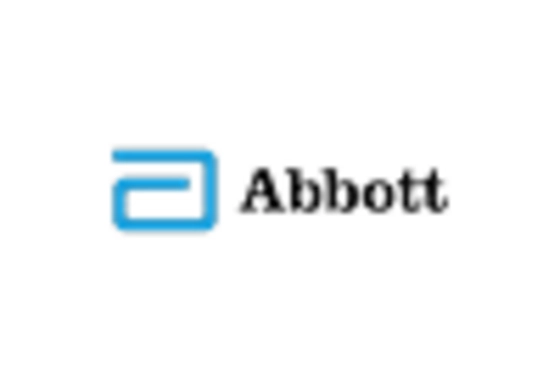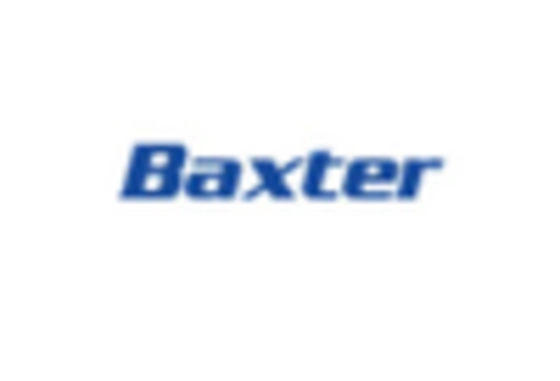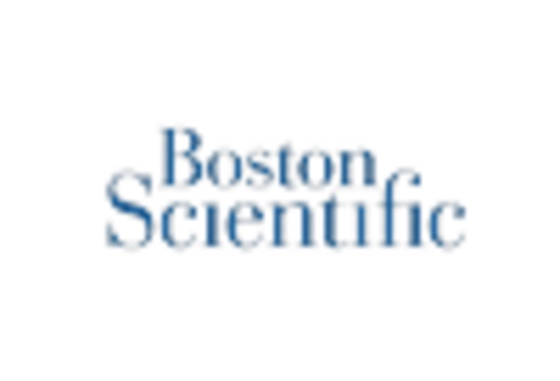Aging Population
The demographic shift towards an aging population is a significant driver for the Feeding Tube Market. As individuals age, they often face various health challenges that can impair their ability to consume food orally. Conditions such as dysphagia, which is common among the elderly, necessitate the use of feeding tubes to maintain nutritional intake. Data suggests that the population aged 65 and older is expected to grow substantially, leading to an increased demand for enteral feeding solutions. This demographic trend indicates that the Feeding Tube Market will likely see sustained growth as healthcare systems adapt to the nutritional needs of an aging society.
Expansion of Home Healthcare Services
The expansion of home healthcare services is a notable driver for the Feeding Tube Market. As more patients prefer to receive care in the comfort of their homes, the demand for enteral feeding solutions that can be managed outside of traditional healthcare settings is increasing. Home healthcare providers are increasingly incorporating feeding tubes into their services to support patients with complex nutritional needs. This shift not only enhances patient satisfaction but also reduces healthcare costs associated with hospital stays. Consequently, the Feeding Tube Market is likely to benefit from this trend, as more patients require home-based nutritional support solutions.
Rising Awareness of Nutritional Support
There is a growing awareness among healthcare professionals and patients regarding the importance of nutritional support, which is significantly influencing the Feeding Tube Market. Education on the benefits of enteral nutrition for patients with swallowing difficulties or malnutrition is becoming more prevalent. This awareness is leading to increased referrals for feeding tube placements and a greater acceptance of enteral feeding as a viable option. As healthcare providers emphasize the role of nutrition in recovery and overall health, the demand for feeding tubes is expected to rise. This trend suggests that the Feeding Tube Market will continue to expand as more patients and caregivers recognize the value of nutritional interventions.
Increasing Prevalence of Chronic Diseases
The Feeding Tube Market is experiencing growth due to the rising prevalence of chronic diseases such as cancer, neurological disorders, and gastrointestinal conditions. These diseases often necessitate nutritional support through feeding tubes, as patients may have difficulty swallowing or absorbing nutrients. According to recent data, the incidence of chronic diseases is projected to increase, leading to a higher demand for enteral feeding solutions. This trend indicates that healthcare providers are increasingly relying on feeding tubes to ensure adequate nutrition for patients with complex medical needs. As a result, the Feeding Tube Market is likely to expand, driven by the need for effective nutritional interventions in managing chronic health conditions.
Technological Innovations in Feeding Tube Design
Technological advancements in the design and functionality of feeding tubes are propelling the Feeding Tube Market forward. Innovations such as improved materials, enhanced safety features, and user-friendly designs are making feeding tubes more effective and easier to use. For instance, the introduction of silicone-based feeding tubes has reduced the risk of complications and improved patient comfort. Furthermore, the integration of smart technology in feeding systems allows for better monitoring of nutritional intake and patient health. These advancements not only enhance patient outcomes but also drive market growth as healthcare providers seek the latest solutions to meet their patients' needs.

















Leave a Comment